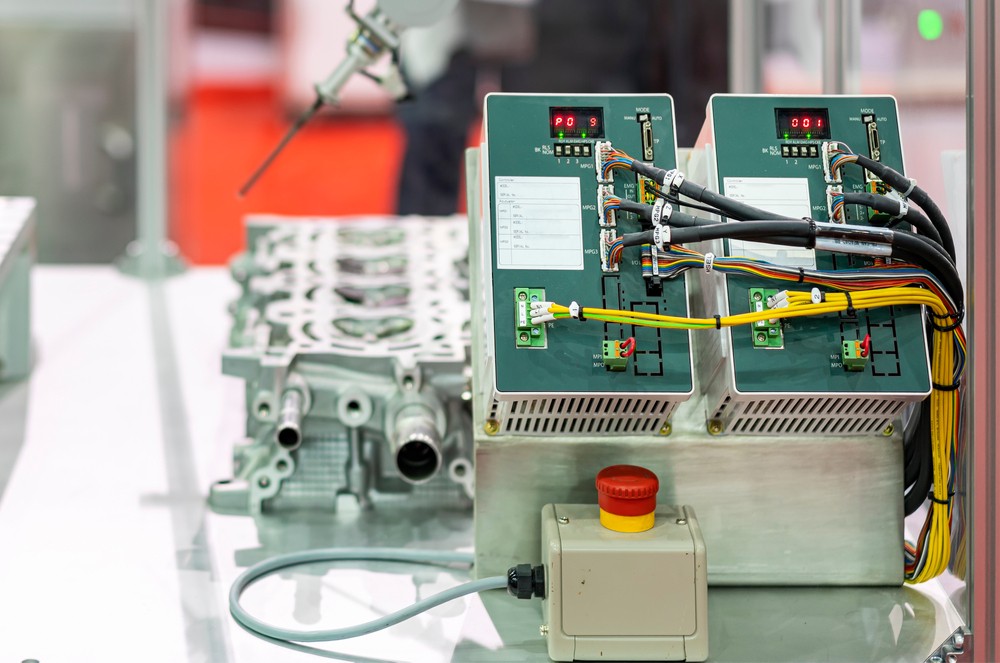Using PLCs for Trend Analysis and Predictive Maintenance

Programmable logic controllers (PLCs) are the backbone of industrial automation. But in today’s data-driven factories, their function goes beyond simple control. PLCs are increasingly becoming powerful tools for trend analysis, giving engineers, maintenance techs, and plant managers the data they need to pursue predictive maintenance strategies.
Let’s explore how PLCs collect data, how trend analysis helps predict equipment issues, and how this approach benefits modern production environments.
The power of data collection with PLCs
PLCs are the brains of any automated system. They receive input from a multitude of sensors: temperature gauges, pressure monitors, vibration sensors, and more. This constant stream of data paints a detailed picture of the equipment’s health.
Traditionally, maintenance was reactive — happening after a breakdown or malfunction. PLCs, with their data collection capabilities, are enabling a shift toward proactive maintenance. By analyzing trends in sensor data, maintenance teams can identify potential problems before they escalate into costly downtime.

Trend analysis for predictive maintenance
Trend analysis involves examining data points over time to identify patterns and anomalies. In the context of PLCs and predictive maintenance, trend analysis focuses on sensor data collected from equipment. By continuously monitoring trends, maintenance techs can anticipate potential issues before they snowball into major failures.
For instance, a gradual increase in motor temperature over several weeks might signal a failing bearing. Without temperature data logged by a PLC, maintenance teams would be solely reliant on manual checks or standard servicing intervals. Early detection allows for scheduled maintenance intervention, preventing a catastrophic motor breakdown that might halt production.
The benefits of trend analysis and predictive maintenance
Implementing trend analysis and predictive maintenance using PLCs has tremendous advantages:
- Reduced downtime: By proactively addressing equipment issues, manufacturers can minimize disruptions and keep production lines running.
- Operational efficiency: Optimizing equipment performance and preventing breakdowns allows manufacturers to achieve higher output and consistent quality.
- Extended equipment lifespan: Catching problems early minimizes unnecessary wear and tear for longer-lasting equipment.
Ultimately, these strategies translate to significant cost savings. Reduced downtime, improved efficiency, and extended equipment life all contribute to a healthier bottom line.

Challenges surrounding PLC data interpretation
While the benefits are undeniable, implementing proactive maintenance strategies can be challenging. The sheer volume of data collected by PLCs requires robust and scalable storage. Expertise in data analysis is also required to effectively interpret trends and identify potential issues. Fortunately, advancements in cloud computing and data analytics software are continuously making these challenges more manageable.
Optimize your PLCs
While PLCs are valued most for their control functions, their ability to collect and store data from sensors unlocks a treasure trove of information for predictive maintenance. Trend analysis — by identifying patterns and anomalies in PLC data — empowers manufacturers to anticipate equipment issues and take proactive measures.
As technology continues to evolve, we can expect even deeper integration of controllers and PLCs with artificial intelligence and machine learning. Tomorrow’s PLCs won’t just capture data — they might just help you act on it.
Need to upgrade or repair your Fanuc PLCs? GES has you covered. This May, we’re offering 15% off Fanuc repairs of three or more items and 10% off repairs on any single item with code MAYFANUC. Get the parts and service you need for critical Fanuc systems, and enjoy the peace of mind that comes with well-maintained equipment.
